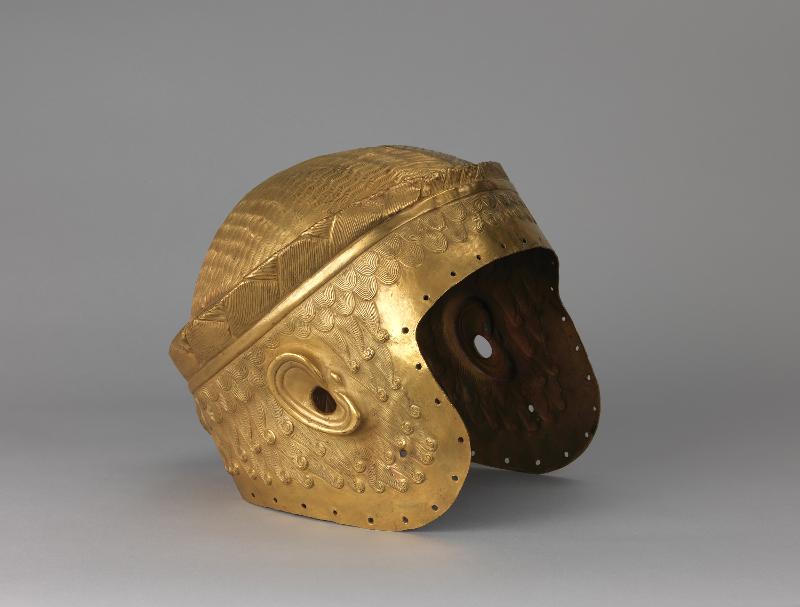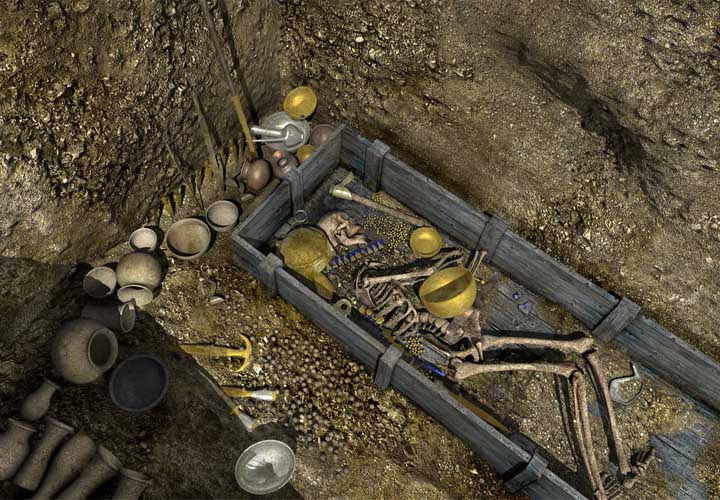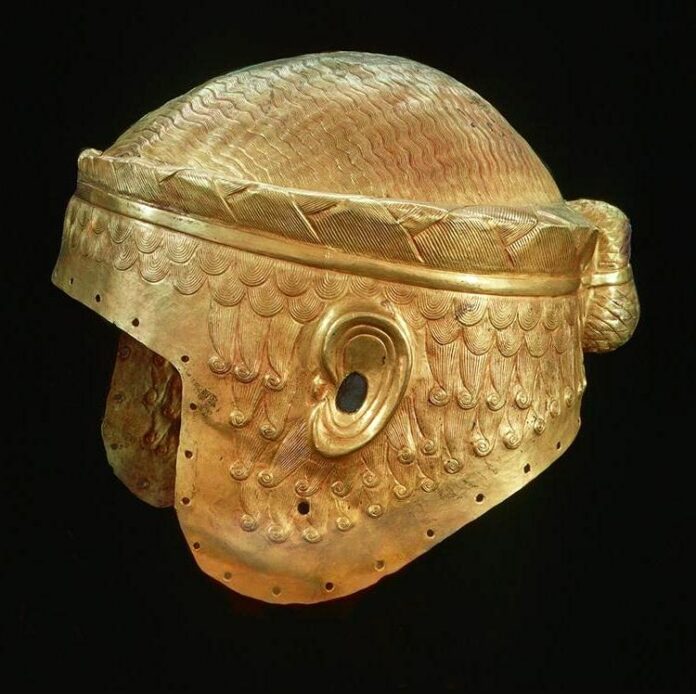In the ancient city of Ur, a remarkable artifact was unearthed that provides a vivid glimpse into the regal life of one of the earliest Sumerian kings, Meskalamdug. This king, whose name translates to “hero of the good land,” ruled during the 26th century BC, though his legacy is somewhat obscured by history. Unlike many of his contemporaries, Meskalamdug’s name does not appear on the Sumerian King List. Instead, his existence is known through various inscriptions and artifacts, including the famous golden helmet discovered by Sir Leonard Woolley, a British archaeologist who dedicated much of his career to excavating the Royal Cemetery of Ur. This article explores the significance of the golden helmet and the intriguing history surrounding Meskalamdug.
The Discovery of Meskalamdug’s Golden Helmet

Sir Leonard Woolley, renowned for his archaeological work at Ur, made one of his most significant discoveries when he unearthed the tomb of Meskalamdug. Among the artifacts found in this tomb was a stunning gold helmet, a testament to the craftsmanship and opulence of the period. The helmet, meticulously crafted from a single sheet of gold, was shaped like a wig with finely sculpted curls. It measured 22.7 cm in height, 27 cm in length, and 21 cm in width. The intricate design included a bun at the back, which was intended to accommodate the king’s hair, while small holes around the edge allowed for the attachment of a cloth lining, likely for comfort.
The golden helmet was not intended for battle but was instead a ceremonial piece, likely worn during important events or rituals. Such helmets were reserved for kings and high-ranking dignitaries, symbolizing their divine status and power.
The Enigmatic King Meskalamdug

Meskalamdug’s life and reign remain shrouded in mystery. He is not listed in the Sumerian King List, yet his status as a king is confirmed by inscriptions found in his tomb and other locations. A royal cylinder seal and a lapis lazuli bead found in the Royal Cemetery at Ur and the city of Mari refer to him as “King,” and these artifacts suggest his significance in Sumerian history. One particularly intriguing discovery was a cylindrical seal depicting two lions attacking bulls, with the legendary hero Enkidu and a naked man in profile joining the fray. This seal bore the inscription “Meskalamdug, King,” indicating that sacrifices may have been made in his name during funerary rites.
The name ‘Meskalamdug’ also appears in connection with another figure, Mesanepada, who is listed as the ruler of the First Dynasty of Ur. An inscription from Mari identifies Meskalamdug as Mesanepada’s father, further complicating the historical narrative. Additionally, a vessel found in Meskalamdug’s grave bore the name “Ninbanda,” identified as a queen, though her exact relationship to Meskalamdug or Mesanepada remains unclear.
The Royal Tombs of Ur and Their Treasures

Meskalamdug’s tomb is one of the most significant discoveries from the Royal Cemetery of Ur. This burial site, mentioned in the Hebrew Bible as the birthplace of Abraham, has been the subject of much debate and fascination. Woolley’s excavations revealed a wealth of artifacts that shed light on the culture and beliefs of the Sumerians. The grave, labeled PG 755, was a rectangular pit containing a wooden coffin with the remains of a man surrounded by valuable items.
Among the treasures found in the tomb were gold and silver lamps, gold-mounted daggers, copper tools, alabaster and clay vases, and numerous copper and silver bowls. Inside the coffin, archaeologists discovered a gold dagger, lapis lazuli beads, two gold bowls, a gold lamp, and the iconic gold helmet. The cuneiform inscriptions on the bowls and lamp bore the name ‘Meskalamdug,’ confirming the tomb’s occupant.
Outside the coffin, a bewildering array of artifacts was found, including a copper pin with a monkey-shaped head, typically associated with royal women. This discovery suggests that the jewelry may have been intended as offerings to underworld deities. The presence of these items, along with the inscriptions bearing the names “Meskalamdug” and “Ninbanda,” underscores the tomb’s importance and the possible sacrificial rituals conducted in honor of the king.
The Legacy of the King of Kish
The title “King of Kish” was an esteemed designation reserved for rulers who held sway over the regions of Sumer and Akkad. It was often associated with Akkadian rulers who dominated Sumer, reflecting the early consolidation of Semitic power in northern Lower Mesopotamia. Meskalamdug’s association with this title, as indicated by inscriptions, highlights his significant role in the political landscape of the time.
Conclusion
The discovery of the golden helmet of Meskalamdug offers a fascinating glimpse into the life and legacy of a Sumerian king whose name, though not widely known, was once synonymous with power and divine authority. Through the meticulous work of Sir Leonard Woolley and the treasures unearthed in the Royal Cemetery of Ur, we are given a window into a world that existed thousands of years ago. Meskalamdug’s helmet, along with the other artifacts found in his tomb, continues to captivate historians and archaeologists, reminding us of the rich and complex history of ancient Mesopotamia.
